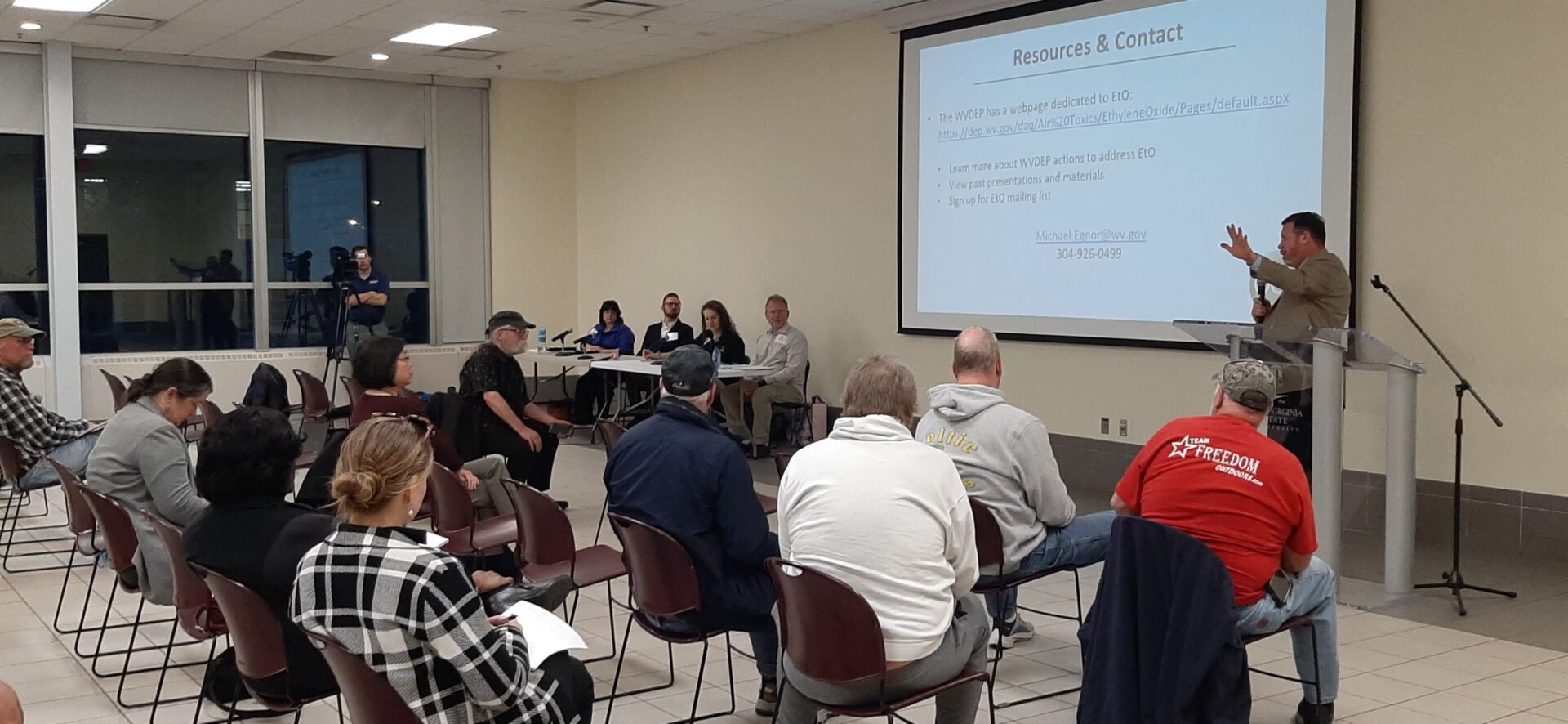The West Virginia Department of Environmental Protection (DEP) held a public hearing Thursday to discuss the findings of a final report on ethylene oxide (EtO) emissions.
The West Virginia Department of Environmental Protection (DEP) held a public hearing Thursday to discuss the final report on their ethylene oxide (EtO) emissions monitoring project.
The hearing also centered around a new agreement the DEP’s Division of Air Quality (DAQ) recently signed with Union Carbide Corporation (UCC) to reduce emissions of EtO, a known carcinogen, at its Institute facility.
On August 22, 2018, the U.S. Environmental Protection Agency (EPA) released an update to the National Air Toxics Assessment (NATA). The national screen tool provides information on potential health risks from breathing air toxics, or hazardous air pollutants.
Using data from its 2014 National-Scale Air Toxics Assessment (NATA), the report identified Union Carbide’s facilities in Institute and South Charleston as emitting ethylene oxide (EtO) at one of the highest rates in the country. EPA has since succeeded NATA with the Air Toxics Screening Assessment, or AirToxScreen, starting with the 2017 data analysis. The mapping tool offers a new approach to air toxics with annually updated data and risk analyses to more easily identify existing and emerging air toxics issues. Their latest assessment uses 2019 data.
Under the terms of the agreement reached with DEP, Union Carbide agrees to continue its ongoing cooperation with the EPA and the DAQ. This would be done by providing in-kind or other tangible resources to assist with the development of air quality-related data collection, and develop monitoring protocols concerning EtO. The agreement would include securing meteorological data related to such research, and identifying and fixing leaks at levels 50 to 1,000 times lower than current regulations allow.
UCC Institute would also be required to develop a unique site-specific EtO emissions screening program for rail cars it has in EtO service. Each rail car would have to be screened within 12 hours of arriving at the facility. Should there be a reading indicating potential rail car emissions, appropriate action would be initiated based on developed response plans.
The Division of Air Quality conducted a short term ethylene oxide air monitoring project in 2022, with samples gathered over 24-hour phases at sites in and around the Union Carbide chemical facilities in Institute and South Charleston.
Michael Egnor, air toxics coordinator for the Division of Air Quality, spoke for almost an hour, explaining test comparisons.
The tests, which included other states, revealed the presence of EtO at all locations evaluated. The site near Institute where Union Carbide loads its railcars is one of two sites identified by the EPA as having a higher concentration of the chemical. Higher levels of EtO were also detected in areas where no known source exists, including Buffalo in Putnam County and Guthrie in northern Kanawha County.
Egnor said in South Charleston EtO emissions actually decreased from more than 1,800 pounds of ethylene oxide in 2014 to 357 pounds in 2021. But Laura Crowder, director of DEP, admitted that the methodology for the tests is not perfect.
“The method itself may not have all the steps necessary so that it would show the actual concentration,” Crowder said. “There are things that would allow it to be biased, where other things could interfere. The methodology needs to specify exactly what needs to be done.”
The department is considering using air modeling to replace air monitoring tests in the future to better predict potential risk in identified areas of concern.
Pam Nixon lives in the Springhill area of South Charleston and has lost both friends and family members to cancer. She said she worries about the unknown synergistic effects of chemical agents.
“Ethylene oxide is only one chemical. There are other carcinogens that are here. When they mix in the air, my nose isn’t just breathing in ethylene oxide for 70 years, it’s breathing all of the chemicals in,” she said.
Nixon said while the agreement with Union Carbide is a step in the right direction, she said it is only one step. She hopes that authorities will reduce the amount of carcinogens in general.
The EPA’s published guidelines for EtO are 100-in-one million lifetime cancer risk.
The agency’s final report on the monitoring project is available on the DEP’s website.
